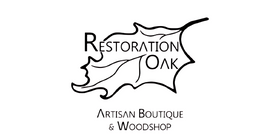If you're considering bamboo flooring for your home, you'll want to read this first. We'll go over the pros and cons of bamboo flooring so you can make an informed decision before you buy it. Bamboo is a great choice for flooring because it's durable, affordable, and environmentally friendly, but there are some things to consider before making your final decision. Keep reading to find out more!
What Is Bamboo Flooring?
Bamboo flooring is a type of flooring that is made from the bamboo plant. The bamboo plant is a member of the grass family, and it is one of the fastest-growing plants in the world. Bamboo flooring first became popular in Asia, but it has gained popularity in recent years in Europe and the United States. It is affordable, stylish, and sustainable, making it an ideal option for those looking for eco-friendly flooring options.

The Different Types of Bamboo Flooring
- Horizontal: Layers of bamboo strips are pushed together. The "knuckles" from the stalk emerge in the graining, keeping the grass's natural appearance.
- Vertical: Before gluing, bamboo strips are twisted sideways and arranged side by side. While less durable, this floor has a cleaner, more modern graining.
- Weaved: Stranded Bamboo strands are squeezed with resin to create a hard surface similar to hardwood. This is the most durable floor and has an intriguing, exotic appearance.
The Advantages of Bamboo Flooring
Traditional hardwood is constructed from oak, rock maple, and hickory trees, which may take up to 20 years to grow before being harvested. Bamboo, on the other hand, is classified as a grass since it grows and develops in a five to seven-year cycle and may be harvested without replanting the root structure.
Bamboo flooring is quite simple to keep clean. Sweeping and vacuuming on a regular basis should be sufficient to eliminate dust and debris. It may be cleaned using a bamboo floor cleaner or a mild soap and water solution regularly to keep it looking fresh. And it’s ideal for people with allergies. There is nowhere for pet hair or other allergens to hide if you follow a regular cleaning routine that includes brushing away dust and debris.
- Stylish:
It has a sleek, contemporary appearance, and there are several colors, styles, grain patterns, finishes, and board sizes to choose from.
Bamboo may get scraped and discolored over time. Fortunately, refinishing the surface is as simple as sanding it down and applying a fresh coat of sealant. Refinishing the top layer may give the floor a fresh, even appearance while also preserving it from potential damage. It is important to note that engineered bamboo flooring cannot be refinished.
Bamboo flooring is ideal for high-traffic areas such as living rooms, kitchens, and entryways. It is inherently resistant to abrasion from foot traffic and the impact of falling items. Strand woven bamboo flooring knits together grass strands to form an interlocking pattern that may be three times stronger than other varieties of bamboo flooring.
Depending on the kind of bamboo flooring used, DIYers may save money on installation. Floating bamboo planks use a "click-lock" technique that is simpler to install and may be completed without the help of a professional. This technique of installation is fast and easy, and it also enables the floor to expand and contract when humidity levels in the space fluctuate
Bamboo has few pests by nature. Pesticides are only used sparingly during harvesting. Some of the chemicals used to treat bamboo flooring prevent termites from digesting it.

Potential Disadvantages of Bamboo Flooring
- Homogeneous look: Bamboo has a unique grain pattern that is quite homogeneous, unlike engineered hardwood floors. It has the potential to be generic, while hardwood flooring is one-of-a-kind.
- Knuckles: These are commonly seen in bamboo flooring, particularly in horizontal bamboo. On bamboo stalks, knuckles are nodes or natural growth rings. Some individuals find this feature on a floor to be less appealing than other flooring options that have gorgeous knot marks like in oak wood.
- Potential for water damage: Water can be absorbed by bamboo grass. As a result, the flooring can be susceptible to moisture and humidity damage, shrinking, warping, and buckling, therefore it’s not a primary option to be used in places such as bathrooms.
- Dents and scratches: They can be more common with inexpensive or darkened bamboo flooring.
- Discoloration: Bamboo could be susceptible to fade and discolor with time.
What Else to Keep in Mind
- How to clean? Sweep or vacuum regularly, and clean the surface with a mop or towel every once in a while. It is not necessary to seal it.
- Is it pet-friendly? Yes! The surface can tolerate pet nails and is stain-resistant.
- Underlayment: Because bamboo shows imperfections, the subfloor must be completely smooth. Because bamboo absorbs moisture, a waterproof underlayment is required if it is laid over a concrete surface.

If you are considering bamboo flooring for your home, be sure to weigh the pros and cons carefully. Bamboo is a sustainable resource and has many benefits over other flooring materials, making it the ideal investment for those who are looking for green home decor products. By understanding what to look for in bamboo flooring and how it compares to other types of flooring, you can make an informed decision about whether this sustainable product is right for your needs. We hope this article has helped give you a good overview of what to expect if you decide to go with this flooring! Happy shopping!

I love how you highlight the fact that bamboo is one of the fastest growing plants in the world. My partner and I have been wanting to replace the flooring in our house with something newer and better looking. We’ve been looking into finding a contractor that does bamboo flooring so we can ensure everything is installed correctly so it all lasts.